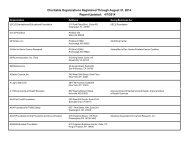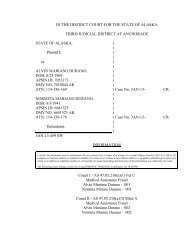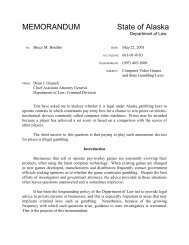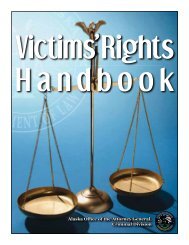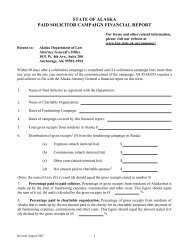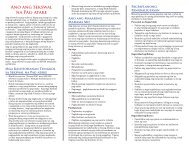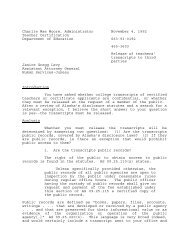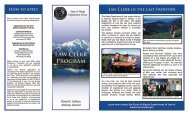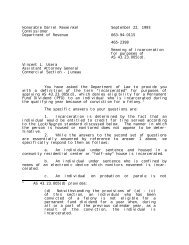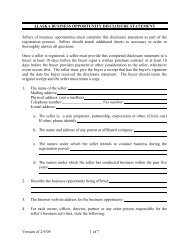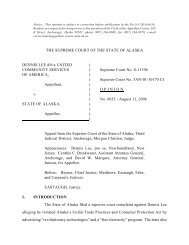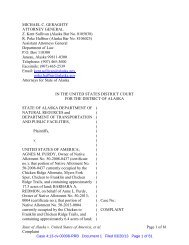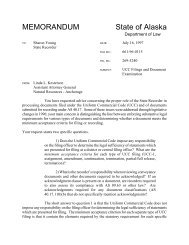Initial Report and Recommendations - Alaska Department of Law
Initial Report and Recommendations - Alaska Department of Law
Initial Report and Recommendations - Alaska Department of Law
- No tags were found...
You also want an ePaper? Increase the reach of your titles
YUMPU automatically turns print PDFs into web optimized ePapers that Google loves.
The Commission emphasizes that alcohol abuse <strong>and</strong> alcoholism in rural <strong>Alaska</strong>are not Native problems, per se, but rather problems for Natives <strong>and</strong> non-Natives alike.But the Commission also acknowledges that over 66 percent <strong>of</strong> the population in rural<strong>Alaska</strong> is Native 8 <strong>and</strong> that recommendations in this report that mention the importance <strong>of</strong>culturally appropriate approaches predominantly focus on <strong>Alaska</strong> Natives. Many may beadopted for non-Natives living in rural <strong>Alaska</strong> as well.The consequences <strong>of</strong> substance abuse <strong>and</strong> the corresponding importance <strong>of</strong>finding effective means to prevent alcohol <strong>and</strong> other drugs from reaching rural <strong>Alaska</strong>communities that have, through local option laws, decided to ban, partially or wholly,alcohol 9 are important threads in the fabric <strong>of</strong> society in rural <strong>Alaska</strong>, as they have beenin the Commission’s work over the last 10 months. Numerous statistics point to thecontinuing – <strong>and</strong> in many cases growing – overrepresentation <strong>of</strong> <strong>Alaska</strong> Natives fromrural <strong>Alaska</strong> among children in need <strong>of</strong> aid, victims <strong>and</strong> perpetrators <strong>of</strong> domestic violence<strong>and</strong> sexual assault, <strong>and</strong> other crimes. The percentage <strong>of</strong> Native children under the care <strong>of</strong>the Office <strong>of</strong> Children’s Services hovers close to 50 percent <strong>and</strong> the numbers <strong>of</strong> Nativeyouth <strong>and</strong> adults in <strong>Alaska</strong>’s juvenile justice <strong>and</strong> correctional systems are similarlydisproportionately large. The justice systems in rural <strong>Alaska</strong> struggle to find locally <strong>and</strong>culturally appropriate ways to manage <strong>of</strong>fenders in a way that minimizes negativeimpacts to families <strong>and</strong> communities <strong>and</strong> strives to restore harmony quickly. There arefrequent “disconnects” between tribal <strong>and</strong> State court systems, <strong>and</strong> disputes overjurisdiction continue throughout rural <strong>Alaska</strong>. In the meantime, rural residents criticizethe inadequacies <strong>of</strong> current law enforcement <strong>and</strong> public safety in much <strong>of</strong> rural <strong>Alaska</strong>,but an affordable <strong>and</strong> acceptable resolution has yet to be found.Domestic violence, child abuse, child neglect, <strong>and</strong> sexual assault are majorproblems in rural <strong>Alaska</strong>. The following quote highlights the experiences <strong>of</strong> one <strong>Alaska</strong>nresearcher:In <strong>Alaska</strong>, we <strong>of</strong>ten see abusive partners who have relocated their familiesto remote communities to isolate them from the support <strong>of</strong> their friends<strong>and</strong> family, <strong>and</strong> to more easily track <strong>and</strong> control their movements. Victimsmay be held hostage in their own homes with no winter clothing or means<strong>of</strong> escaping their extreme isolation. Deprivation <strong>and</strong> isolation becomepowerful tools to control victims.One survivor, who shares her story to help others underst<strong>and</strong> the dynamics<strong>of</strong> abuse in rural communities, described how her husb<strong>and</strong> str<strong>and</strong>ed her<strong>and</strong> their new baby at a remote fish camp for several weeks withoutenough food, medications <strong>and</strong> other essentials. Eventually, she was able toescape her abusive marriage <strong>and</strong> became a domestic violence outreachworker to remote villages in the Arctic. Although she struggles withdebilitating, long-term health problems secondary to the abuse, shesurvived. Her former husb<strong>and</strong> murdered his next wife.89See Section B.2 <strong>of</strong> this Chapter for the relevant population statistics.<strong>Alaska</strong>’s Local Option law has five categories: (1) Sale by community license only, (2) Sale by selectedlicenses only, (3) Ban sale, (4) Ban Sale <strong>and</strong> importation, <strong>and</strong> (5) Ban possession. For a detailed history<strong>of</strong> alcohol control in <strong>Alaska</strong> see http://www.iser.uaa.alaska.edu/Publications/Alcohol_Arctic.pdf<strong>Alaska</strong> Rural Justice <strong>and</strong> <strong>Law</strong> Enforcement Commission - Page 8



